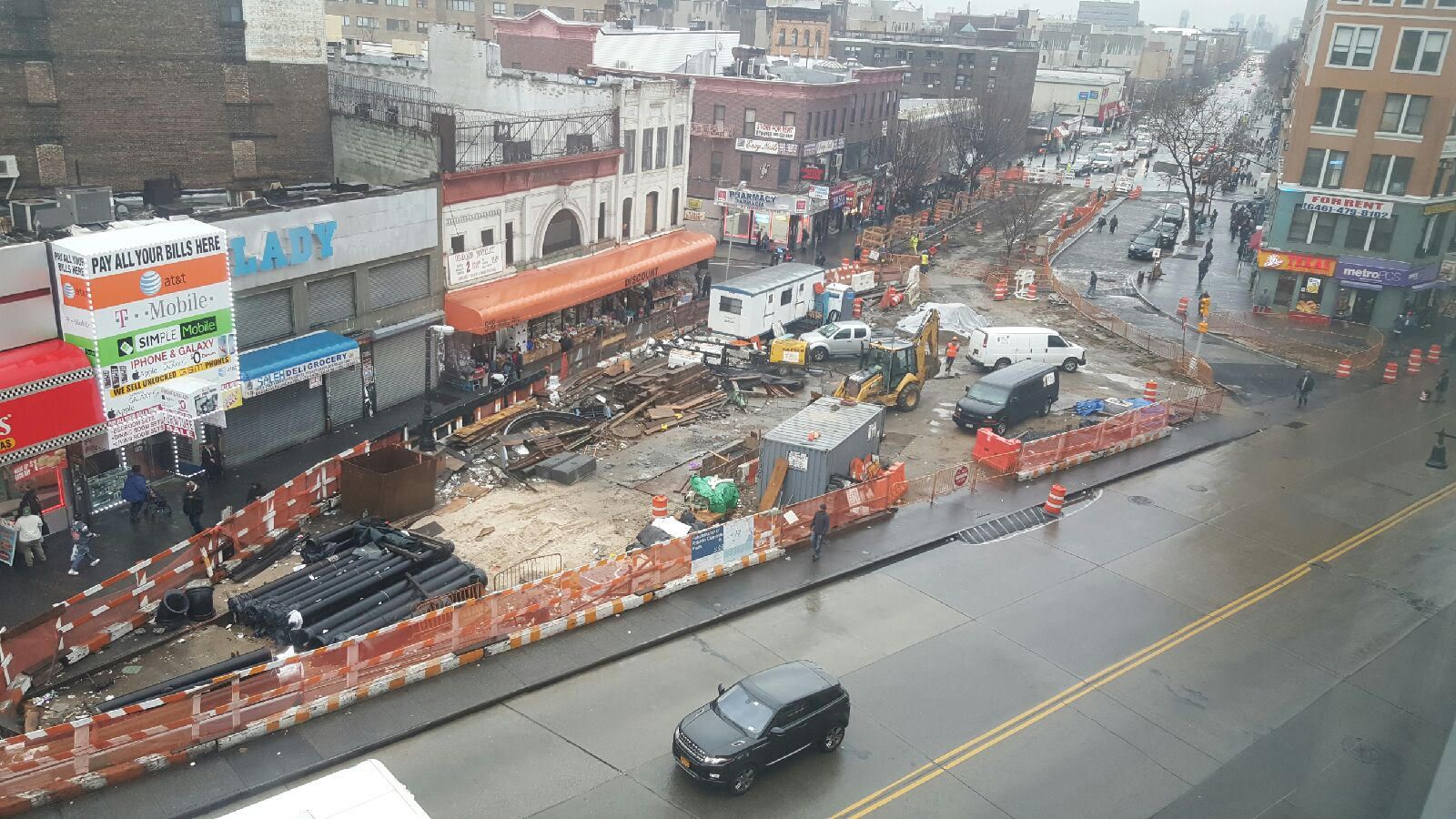Since 2008, DOT's plaza program has redesigned dozens of blocks, transforming asphalt for cars into public space for people, from Times Square to Corona.
Local Business Improvement Districts and other neighborhood organizations have played a vital role in the plaza program, pushing electeds and community boards to endorse street redesigns and signing on as "community partners" responsible for maintaining the new public spaces.
But once DOT passes the plaza projects over to the Department of Design and Construction and capital construction work gets underway, those partners often take a huge hit as the projects suffer interminable delays and setbacks under DDC's watch.
Construction on Clinton Hill's Myrtle Avenue Plaza, one of the plaza program's first projects, has wracked nearby businesses, according to Meredith Phillips Almeida of the Myrtle Avenue Brooklyn Partnership, DOT's plaza community partner. Almeida said the ongoing construction has scared away customers, leading multiple businesses to close.
DDC's contractor broke ground on the plaza in August 2014, and construction was supposed to take 18 months. But two years later, construction was still ongoing. Only then did Almeida gain a seat at the table during project coordination meetings.

When Almeida got DDC, DOT, and the Department of Small Business Services to meet directly with affected business owners, things started to turn around. "For the most part, DDC just listened," she said. "I think it was important just for us to create that opportunity [for DDC to engage with local merchants].”
Michael Brady, of the Bronx's Third Avenue/The Hub BID, had a similar experience getting DDC to provide consistent updates on the long-delayed construction of Roberto Clemente Plaza. Before Brady took over, the construction area had become an eyesore, driving people away from surrounding businesses.
Brady said the weekly construction updates sent out by DDC's community liaison are insufficient "because those things change daily." Instead of relying on DDC to send information, he said, "I have been very proactive in getting information from the DDC and DOT."
Almeida said experiences like hers and Brady's have spurred the New York BID Association, which represents BIDs across the city, to put together a committee to improve communication with DDC. The BIDs want to gain a better understanding of when and where construction is happening and how bus routes and parking regulations are affected.
"We’re still making headway in terms of helping [DDC] understand that there is opportunity for growth in terms of their community-facing approach," she said. "Engineers usually are not the same people who should be in charge of creating a community outreach process."
Fortunately for Myrtle Avenue businesses, construction should wrap up in April or May of this year, Phillips Almeida said, nine years after DOT first announced plans for the plaza.






